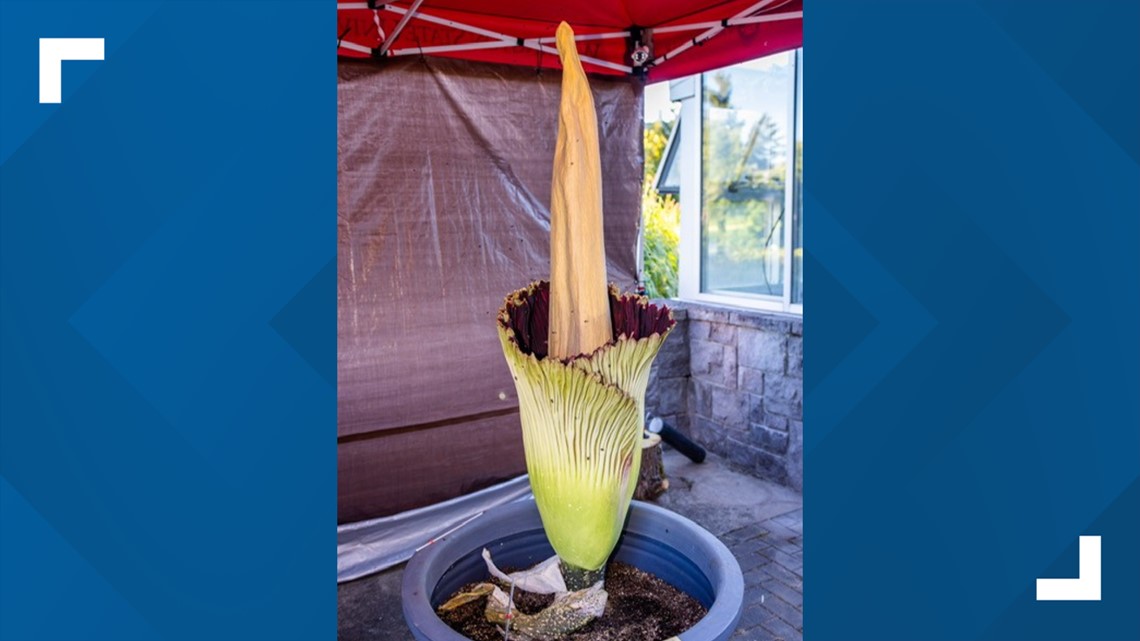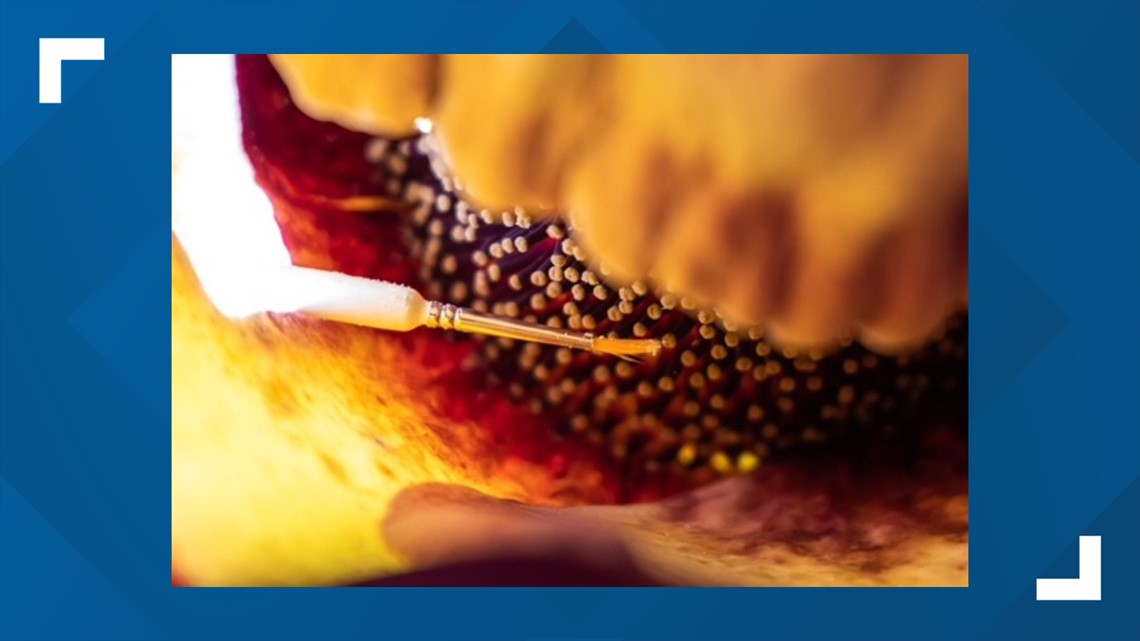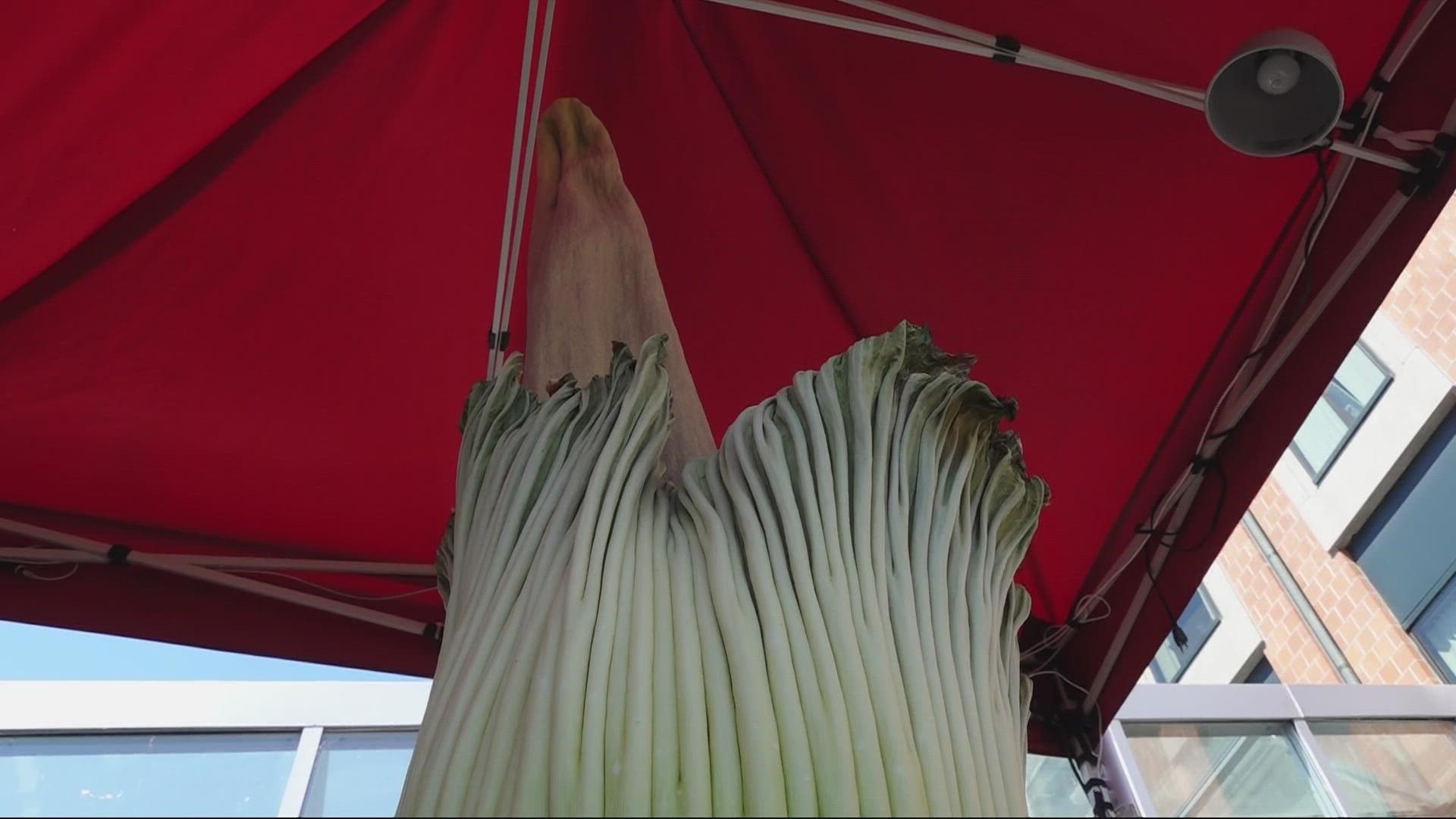VANCOUVER, Wash. — Well, did you smell it?
Washington State University's corpse flower officially started blooming on Tuesday — and boy did it come with a very distinct stench.
Its name is “Titan-VanCoug" and it stands nearly 7 feet tall. The plant is also 20 years old.
The corpse flower — nickname for amorphophallus titanum, or the titan arum — is native to the limestone hills of Sumatra, Indonesia’s rainforests; the only place in the world where it naturally grows.
This is the second of four blooms in this particular flower's lifetime. The first bloom took place in July of 2019, attracting 20,000 visitors to the WSU Vancouver campus.
“I'm proud and I'm blessed and I'm humbled to be able to take care of it,” said Dawn Freeman, the flower's caretaker. “It's a big job and it means a lot to a lot of people. So I'm ready for it.”


Freeman has been taking care of the plant for the past year and a half after it was passed down by now-retired Washington State professor Steven Sylvester, who planted it two decades ago. But apart from it being among the world's largest and rarest flowering structures, it comes with a pretty strong smell when it blooms. Many compare the aroma to rotting meat or dirty socks, to name a few.
“I was expecting the smell to be so strong,” said the Stilin family from Vancouver. “Kind of makes me not want to come close. But that didn't happen. So, that's good. I said that I could walk close and take a lot of photos and enjoy the flowers.”
Sylvester said he believes the flower's smell isn't as strong as some people may have anticipated. He thinks it's a combination of the flower's closing and the 90-degree temperatures we're seeing right now. The plant's ideal environment is 80 degrees and humid.
“I thought it would open up more,” said Sylvester. “But it has an internal clock mechanism and I think that the outdoor temperature yesterday in the afternoon sped that clock up because it seems to be going faster than I would have predicted.”
And while it has been a long time coming to get to this point, everyone is happy to be part of the long but rewarding journey.
“I just feel lucky and I'm learning all the time about it — you know, it surprises me with what it does,” said Sylvester.
“It makes us happy to be a part of conserving this threatened species. It's just a proud, happy moment all the way around,” said Freeman.
The two other corms — something like the flower bulbs we may be more familiar with — are still deciding on when they'll bloom. Sylvester and Freeman both said they're anticipating for the third to bloom within the next year or so.



